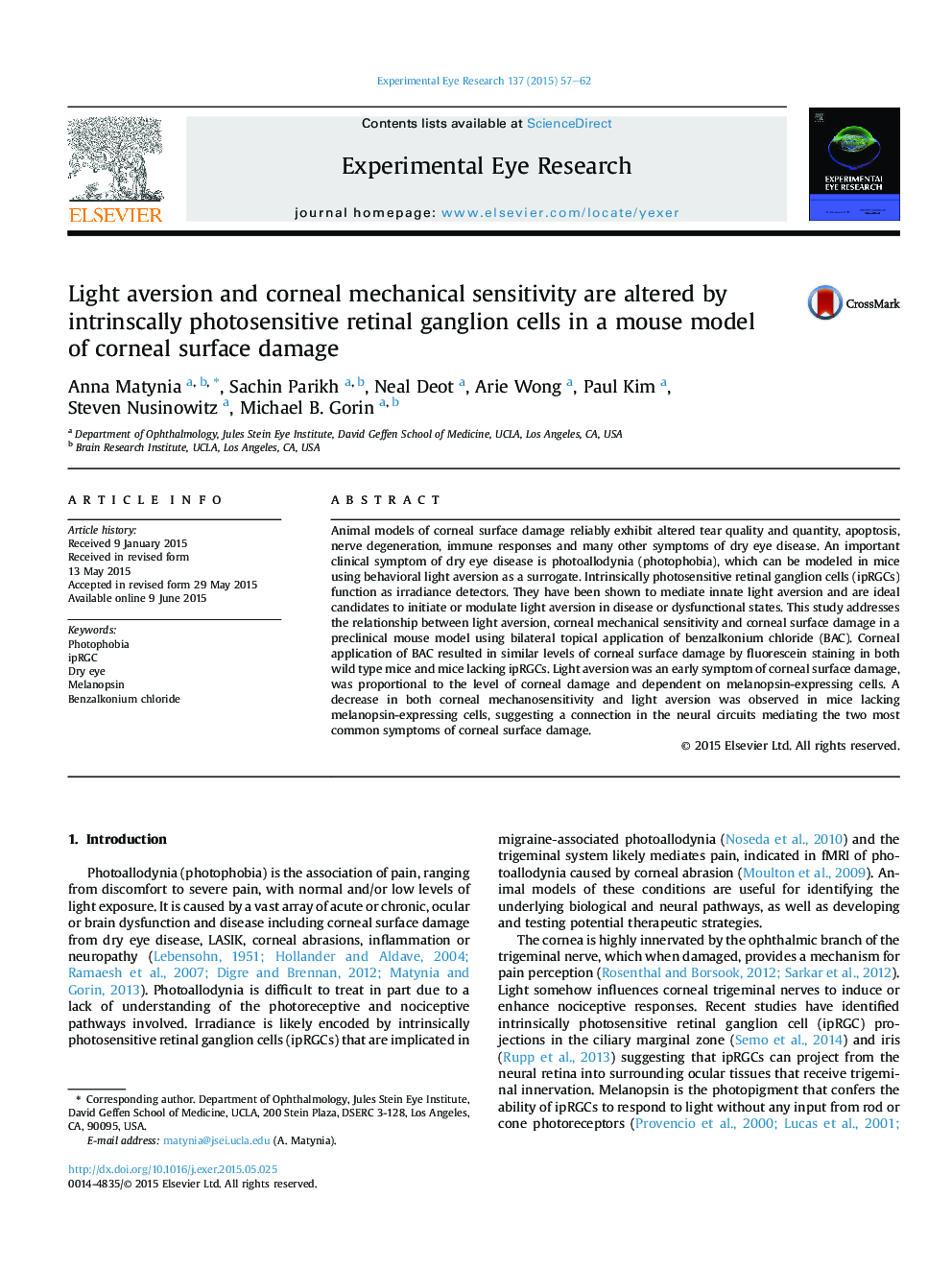| کد مقاله | کد نشریه | سال انتشار | مقاله انگلیسی | نسخه تمام متن |
|---|---|---|---|---|
| 6196711 | 1602585 | 2015 | 6 صفحه PDF | دانلود رایگان |

- Corneal surface damage from benzalkonium chloride (BAC) causes light aversion.
- Melanopsin-expressing neurons are required for BAC-induced light aversion.
- Corneal mechanical sensitivity is altered in mice lacking melanopsin-expressing neurons.
Animal models of corneal surface damage reliably exhibit altered tear quality and quantity, apoptosis, nerve degeneration, immune responses and many other symptoms of dry eye disease. An important clinical symptom of dry eye disease is photoallodynia (photophobia), which can be modeled in mice using behavioral light aversion as a surrogate. Intrinsically photosensitive retinal ganglion cells (ipRGCs) function as irradiance detectors. They have been shown to mediate innate light aversion and are ideal candidates to initiate or modulate light aversion in disease or dysfunctional states. This study addresses the relationship between light aversion, corneal mechanical sensitivity and corneal surface damage in a preclinical mouse model using bilateral topical application of benzalkonium chloride (BAC). Corneal application of BAC resulted in similar levels of corneal surface damage by fluorescein staining in both wild type mice and mice lacking ipRGCs. Light aversion was an early symptom of corneal surface damage, was proportional to the level of corneal damage and dependent on melanopsin-expressing cells. A decrease in both corneal mechanosensitivity and light aversion was observed in mice lacking melanopsin-expressing cells, suggesting a connection in the neural circuits mediating the two most common symptoms of corneal surface damage.
Journal: Experimental Eye Research - Volume 137, August 2015, Pages 57-62